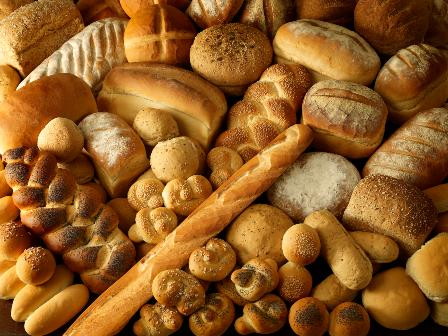Brown Bread Conundrum

I was having breakfast with friends, and one of them asked the waiter for wheat toast. His response was, “The only choice we have is white or brown, and I don’t know what the brown is.”
There was an awkward silence as everybody waited for my friend’s answer. She was clearly confused. Her cheeks flushed as she imagined every eye in the restaurant was on her, every patron wondering what was taking her so long. She searched the faces of her friends at the table for any simple sign of support, but found none. She sat naked and alone.
“White,” she finally squeaked and retreated to the safety of avoiding the unknown. Better to have bread you don’t want than bread you don’t know.
How many different kinds of brown bread exist? How brown is brown? Does tan qualify? Rye is kind of tan, but some of these new multi-grain breads are no more brown than rye bread is. Just where do you draw the line? Pumpernickel is definitely brown unless you have three choices; white, brown or black, and then you’ve got another dilemma.
I consider the multi-grains a subset of the browns. So what is the maximum number of grains that can be stuffed into bread? I think fourteen is the highest I’ve seen, but who polices that stuff? How would you be sure you got the number you were entitled to? Do loose grains in the bottom of the bag count, or do they actually have to be baked into the bread? I don’t think I can even name fourteen different grains that are fit for human consumption. The seed mix I put out for the wild birds only has like four or five different kinds, none of which are present in fourteen grain bread. Some birds that eat nothing but grain all day survive quite well on just four; do we really need ten more grains in our minimum daily requirement than birds do?
Why can’t all of these grains be ground up? Must my bread have lumps? If a guy settles for lumps in his bread, how long will it be before lumps in mashed potatoes, gravy, mattresses or wives will be acceptable as well?
White bread does quite well with a single bag and a little twist tie, so why do the multi-grain breads have to be double wrapped? They probably put a hermetically sealed cellophane bag within a plastic bag because they know that at ten dollars a loaf, it might stay on the shelf for a while. Or maybe it’s because they lop the heels off to reduce the weight to a pound, making sure you don’t get any more than what you’re entitled to, thereby exposing both ends of the loaf. They’ve done that for years with rye bread without double wrapping. Sometimes, however, it’s hard to tell if rye bread is stale or not.
One thing I can’t complain about with these multi-grain breads is the size of the slice. There are no wimps here. Each slice is about the size and weight of a manhole cover and anything less than a half-pound of bologna disappears between two slices. You have to add helper springs to your toaster or lay it on its side, otherwise you better get used to standing on a chair to fan your smoke alarm. After about six months, you’ll have enough pieces to pave your driveway.
If you also save the bags, you can sandbag your house in case of a flood.
